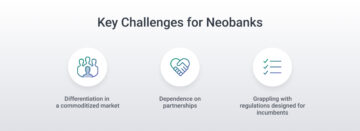
Two is better than one, isn’t it? This is undoubtedly true in the case of IoT and machine learning. These two most popular and trending technologies are offering a solid growth system for companies if implemented together correctly. When combined, they help you unlock the true power of data and boost business efficiency, sales, and customer relationships.
Therefore, incorporation of IoT and machine learning in business is seen on a wide scale. We are going to discuss some of the popular areas where these technologies are used. Before that, let’s see some statistics around them.
Statistics Showing Trend of IoT and ML
According to IoT analytics, the world will have 14.4 billion IoT-connected devices by the end of 2022 which is 10% more than the previous year.
By 2025, this number will reach approximately 27 billion clearly indicating that businesses are quickly adopting it. The market of machine learning, on the other hand, is expected to cross the $200 billion mark by 2025. These figures are enough to confidently say that the market of IoT and machine learning are not going to slow down anytime, but rather will increase over time.
Now, a question pops up: what are the benefits of using IoT and machine learning in business? First things first, knowing how they work together will help you understand the true value they add to your business.
How IoT and Machine Learning Work Together?
As the name suggested, the Internet of things is a network of all devices having sensors, connected through the internet. This connection gives them the ability to communicate with any other device on the network.
What after that? How will you put that data to use? Machine learning is the answer. It is a subset of AI and a process of using data to develop mathematical models or algorithms to train the computer without much human interference.
With that learning, the system can be used to anticipate the most likely plot based on the data. The prediction can be wrong or right and depending on that algorithm updates itself to deliver a better possible scenario next time.
Thus, both complement each other to give a competitive advantage to businesses over others through data accumulation and analysis so that they can decide what’s better for their growth. This is true for every type of sector, be it healthcare, finance, automotive, agriculture, manufacturing, and more.
But there’s more than the above-mentioned reason to use IoT and machine learning in business processes. Let’s understand their role in different businesses better and what advantages they offer.
Benefits of IoT and Machine Learning for Businesses –
It Automates the Business Processes
For any organization, whether small or large, there are a certain set of business processes. Each one should be efficient to achieve the organization’s goal. However, monotonous tasks like scheduling emails or record-keeping processes can cause unnecessary delays and hamper overall productivity.
Machine learning and IoT can automate those boring and repetitive tasks to streamline the business process. Not just that, it reduces the chances of human errors, and inefficiencies, improves follow-up with the lead, scheduling of marketing campaigns, events, etc.
Adds an Extra Layer of Security
No place is protected from accidents, frauds, and cyber-attacks. They are common in the industry and if not addressed immediately can cause major losses to the business, its employees, and customers.
But it is hard to keep an eye on every single area or device. Using IoT and machine learning in business not only help in monitoring each aspect to identify loopholes and threats but also let you take necessary preventive measures beforehand.
Helps Identifying the Productive Resources
Whether it’s financial, human, physical, or technological resources your business has, it is essential to filter out the most productive ones and eliminate the rarely used resources. With use of IoT and machine learning in business processes, you can assist you in analysing this and prevent unnecessary expenses on those unused and non-productive resources. They can also suggest where your company needs to utilize those resources.
Helps Understanding the Customers
Customers are an important asset of any company. Making them satisfied is thus important to be successful and increase revenue. Machine learning and IoT can help companies in delivering what their customers want without guessing it. They can learn how customers are interacting with their brand and what things they dislike or like the most.
With all the valuable insights in your hands, you can create products and services they are expecting the most. Or analyze which one is doing good in the market. This way brands can benefit in two ways- delivering better customer experience and increasing revenue by delivering the right products to the audience. For e-commerce platforms, machine learning and IoT are the go-to technologies to achieve this.
Use Cases of IoT and Machine Learning in Various Businesses –
Retail Industry: Supply Chain Management
The supply chain industry is data-reliant which means wrong or incomplete data can cause several issues in the process. Cost inefficiency, technical downtimes, problem in determining price and transportation costs, inventory theft and loss, etc are a few such problems they face.
Implementing IoT sensors on the devices involved to extract vital data and then send them to machine-learning models can help in the following ways.
• Improve the quality of products
• Reduce operational costs
• Check the status of delivery
• Prevent inventory theft and fraud
• Maintain the balance between demand and supply
• Improve supply chain visibility to boost customer satisfaction
• Boost transportation of goods across borders
• Increase operational efficiency and revenue opportunities
• Check for any defects in the product or industrial equipment
Automotive Industry: Self-Driving Cars
IoT sensors are enhancing the capabilities of vehicles making them smarter and more independent. We call them smart cars or self-driving cars, where human presence is not even an option. Together with artificial intelligence and machine learning, these vehicles can evaluate the situation on the road and can make better decisions in real-time.
They now have reliable cameras to get a clear understanding of roads. Radar detectors allow autonomous vehicles to see even at night thus improving their visibility.
Healthcare Industry: Smart Healthcare Solutions
Patient monitoring has become easy with machine learning and IoT. Doctors can now get real-time data on patients’ health conditions from connected gadgets and suggest tailored treatments.
Remote glucose monitoring is one such use case where doctors can monitor the glucose level of patients through CGM( continuous glucose monitoring) systems. If there is any anomaly in the glucose level, a warning notification is issued so that patients can immediately connect to the doctor and get the necessary treatment.
AI-equipped Apple Watch is another best use case of machine learning and IoT. The smartwatch is very useful in monitoring the heartbeat. According to a study by Cardiogram, the Apple watch gives 97 percent accurate results on heart rate monitoring and can detect paroxysmal atrial fibrillation which is mainly caused due to irregularity in heart rhythm.
Manufacturing Industry: Condition-Based Monitoring
Machines are undoubtedly not going to last forever; they continuously undergo wear and tear and ultimately reach a point where they need to be repaired or discarded. As the manufacturing industry is one of the sectors that depend heavily on machines, they need to keep an eye on machines’ health strictly.
CBM is one of the most important predictive maintenance strategies that work in this case. Using machine learning techniques and combined with the information gathered from the IoT sensors, conclusions regarding the status of the equipment can be monitored.
For example, mechanical misalignment, short circuits, and wear-out conditions can be detected through this technique. This helps identify the root problem and how early a machine needs maintenance.
Furthermore, this type of automated machine learning assistance decreases the human engineering effort by 50 %, reduces the maintenance budget, and boosts the availability of machines. False alarming, which is one of the main issues of condition monitoring, is also solved by 90% with the help of machine learning models in CBM.
Conclusion
No single technology can alone bring massive success to businesses. Thus, they should be flexible enough to incorporate several technologies together. The Internet of Things (IoT), and Machine Learning are two such powerful combinations that when used correctly can scale up the growth of a business.
They are reshaping almost every industry from agriculture to IT making them more efficient, scalable, and productive.
- SEO Powered Content & PR Distribution. Get Amplified Today.
- Platoblockchain. Web3 Metaverse Intelligence. Knowledge Amplified. Access Here.
- Source: https://www.finextra.com/blogposting/23927/making-an-impact-iot-and-machine-learning-in-business?utm_medium=rssfinextra&utm_source=finextrablogs
- :is
- $UP
- 2022
- a
- ability
- accidents
- According
- accumulation
- accurate
- Achieve
- across
- Adopting
- ADvantage
- advantages
- After
- agriculture
- AI
- algorithm
- algorithms
- All
- alone
- analysis
- analytics
- analyze
- and
- Another
- answer
- anticipate
- Apple
- Apple Watch
- approximately
- ARE
- AREA
- areas
- around
- artificial
- artificial intelligence
- Artificial Intelligence and Machine Learning
- AS
- aspect
- asset
- assist
- Assistance
- At
- audience
- automate
- Automated
- automated machine learning
- automates
- automotive
- autonomous
- autonomous vehicles
- availability
- Balance
- based
- BE
- become
- before
- benefit
- benefits
- BEST
- Better
- between
- Billion
- boost
- Boring
- brand
- brands
- bring
- budget
- business
- Business Process
- business processes
- businesses
- by
- call
- cameras
- Campaigns
- CAN
- capabilities
- cars
- case
- cases
- Cause
- caused
- certain
- chain
- chances
- check
- clear
- clearly
- combinations
- combined
- Common
- communicate
- Companies
- company
- competitive
- Complement
- computer
- condition
- conditions
- confidently
- Connect
- connected
- connection
- continuous
- continuously
- correctly
- Cost
- Costs
- create
- Cross
- customer
- customer experience
- Customers
- data
- decide
- decisions
- delays
- deliver
- delivering
- Demand
- Depending
- detected
- determining
- develop
- device
- Devices
- different
- discuss
- Doctor
- Doctors
- doing
- down
- e-commerce
- e-commerce platforms
- each
- Early
- easy
- efficiency
- efficient
- effort
- eliminate
- emails
- employees
- Engineering
- enhancing
- enough
- equipment
- Errors
- essential
- etc
- evaluate
- Even
- events
- Every
- example
- expected
- expecting
- expenses
- experience
- extra
- extract
- eye
- Face
- few
- Figures
- filter
- finance
- financial
- Finextra
- First
- flexible
- following
- For
- forever
- from
- Gadgets
- get
- Give
- gives
- goal
- going
- good
- goods
- Growth
- hand
- Hands
- Hard
- Have
- having
- Health
- healthcare
- Heart
- heavily
- help
- helps
- How
- However
- HTTPS
- human
- identify
- identifying
- immediately
- Impact
- implemented
- important
- improve
- improves
- improving
- in
- incorporate
- Increase
- increasing
- independent
- industrial
- industry
- information
- insights
- Intelligence
- interacting
- Internet
- internet of things
- inventory
- involved
- iot
- Issued
- issues
- IT
- ITS
- itself
- jpg
- Keep
- Knowing
- large
- Last
- layer
- lead
- LEARN
- learning
- Level
- like
- likely
- loopholes
- loss
- losses
- machine
- machine learning
- Machine Learning Techniques
- Machines
- Main
- maintain
- maintenance
- major
- make
- Making
- manufacturing
- manufacturing industry
- mark
- Market
- Marketing
- Marketing Campaigns
- massive
- mathematical
- means
- measures
- mechanical
- models
- Monitor
- monitored
- monitoring
- more
- more efficient
- most
- Most Popular
- name
- necessary
- Need
- needs
- network
- next
- night
- notification
- number
- of
- offer
- offering
- on
- ONE
- operational
- opportunities
- Option
- organization
- Other
- Others
- overall
- patients
- percent
- physical
- Place
- Platforms
- plato
- Plato Data Intelligence
- PlatoData
- Point
- Pops
- Popular
- possible
- power
- powerful
- prediction
- presence
- prevent
- previous
- price
- Problem
- problems
- process
- processes
- Product
- productive
- productivity
- Products
- Products and Services
- protected
- put
- quality
- question
- quickly
- radar
- Rate
- rather
- reach
- real-time
- real-time data
- reason
- record-keeping
- reduce
- reduces
- regarding
- Relationships
- reliable
- repetitive
- Resources
- Results
- revenue
- road
- roads
- Role
- root
- s
- sales
- satisfied
- scalable
- Scale
- scenario
- scheduling
- sector
- Sectors
- self-driving
- sensors
- Services
- set
- several
- Short
- should
- single
- situation
- slow
- small
- smart
- smarter
- smartwatch
- So
- solid
- some
- statistics
- Status
- strategies
- streamline
- Study
- success
- successful
- such
- supply
- supply chain
- Supply Chain Visibility
- system
- Systems
- tailored
- Take
- tasks
- Technical
- techniques
- technological
- Technologies
- Technology
- that
- The
- the information
- the world
- theft
- their
- Them
- These
- things
- threats
- Through
- time
- to
- together
- Train
- transportation
- treatment
- Trend
- trending
- true
- true value
- Ultimately
- understand
- understanding
- undoubtedly
- unlock
- unused
- Updates
- use
- use case
- utilize
- Valuable
- value
- various
- Vehicles
- visibility
- vital
- warning
- Watch
- Way..
- ways
- What
- whether
- which
- wide
- will
- with
- without
- Work
- work together
- world
- Wrong
- year
- Your
- zephyrnet












